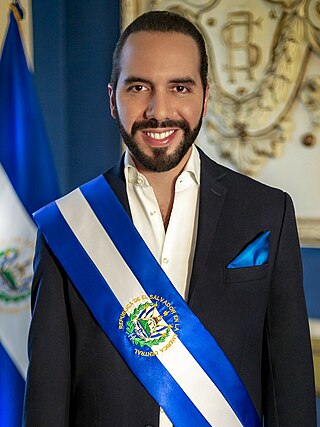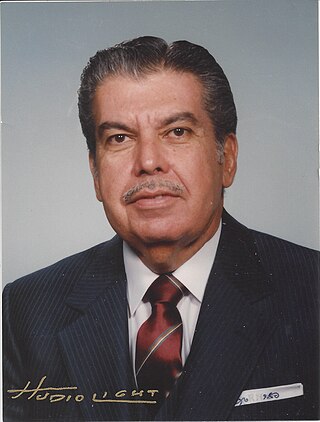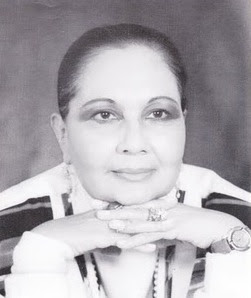Colonel Arturo Armando Molina Barraza was a Salvadoran politician and military officer, who served as President of El Salvador from 1972 to 1977.

Carlos Humberto Romero Mena was a Salvadoran military general and politician who served as president of El Salvador from 1 July 1977 until his overthrow on 15 October 1979. Romero was the final president of the country's military dictatorship which began in 1931.

Nicolás Armando Muñoz Jarvis is a Panamanian professional footballer who plays as a forward.
Ramiro Ernesto Carballo Henríquez is a retired Salvadoran professional football player.
Asociacion Deportivo Municipal Juayúa, also known simply as A.D. Municipal, is a professional football club based in Juayúa, El Salvador.

The University of El Salvador or Universidad de El Salvador (UES) is the oldest and the most prominent university institution in El Salvador. It serves as the national university of the country. The main campus, Ciudad Universitaria, is located in the capital of San Salvador, but there are also branches of the university in other Salvadoran cities such as Santa Ana, San Miguel and San Vicente. The university counts a total of 9 faculties in its main campus and has a student population of more than 50,000.
Fabricio Heriberto Alfaro Torres is a Salvadoran professional footballer who plays as a midfielder and most recently played for C.D. Águila.

The Salvadoran military dictatorship was the period of time in Salvadoran history where the Salvadoran Armed Forces governed the country for almost 48 years from 2 December 1931 until 15 October 1979. The authoritarian military dictatorship limited political rights throughout the country and maintained its governance through rigged and fixed elections.

The nations of El Salvador and Mexico established diplomatic relations in 1838. Both nations are members of the Association of Caribbean States, Community of Latin American and Caribbean States, Organization of American States, Organization of Ibero-American States and the United Nations.

Nayib Armando Bukele Ortez is a Salvadoran politician and businessman currently serving as the 43rd president of El Salvador since 1 June 2019. He is the first Salvadoran president since 1984 who was not elected as a candidate of one of the country's two major political parties: the right-wing Nationalist Republican Alliance (ARENA) and the left-wing Farabundo Martí National Liberation Front (FMLN), of which Bukele was formerly a member.
David Antonio Rugamas Leiva is a Salvadoran professional football player, who plays as a forward.
The following lists events that happened in 1915 in El Salvador.

Death squads in El Salvador were far-right paramilitary groups acting in opposition to Marxist–Leninist guerrilla forces, most notably of the Farabundo Martí National Liberation Front (FMLN), and their allies among the civilian population before, during, and after the Salvadoran Civil War. The death squads committed the vast majority of the murders and massacres during the civil war from 1979 to 1992 and were heavily aligned with the United States-backed government.
The 1972 Salvadoran coup d'état attempt occurred from 25 to 26 March 1972 when young military officers attempted to overthrow the government of Fidel Sánchez Hernández, prevent the presidency of Arturo Armando Molina, and proclaim José Napoleón Duarte as President of El Salvador. The coup was suppressed and its leaders were exiled from the country.

The Captain General Gerardo Barrios Military School, abbreviated as the EMCGGB, was a military academy in El Salvador. It was established in 1868 and is named after Captain General Gerardo Barrios who served as President of El Salvador from 1859 to 1863. It was located in Antiguo Cuscatlán, Santa Tecla, La Libertad. It was demolished in June 2022 to make way for the construction of the Estadio Nacional de El Salvador.

General elections were held in El Salvador on 4 February 2024 to elect the president, vice president and all 60 deputies of the Legislative Assembly. This was followed by a second set of elections on 3 March 2024 in which voters elected all 44 mayors and municipal councils of the country's municipalities and all 20 of El Salvador's deputies to the Central American Parliament (PARLACEN).
Opinion polling has been conducted in El Salvador since September 2019, three months after President Nayib Bukele took office on 1 June 2019, to gauge public opinion of Bukele and his government. Despite negative reception from outside of El Salvador, domestically, Bukele is considered to be one of the most popular presidents in Salvadoran history as his approval ratings generally hover around 90 percent.

The Salvadoran Independent Party is a Salvadoran political party.

Ricardo Armando Novoa Arciniegas was a Salvadoran attorney at law, notary, writer and politician.

Mercedes Durán Flores, better known by the pseudonym Mercedes Durand, was a Salvadoran poet and journalist.













